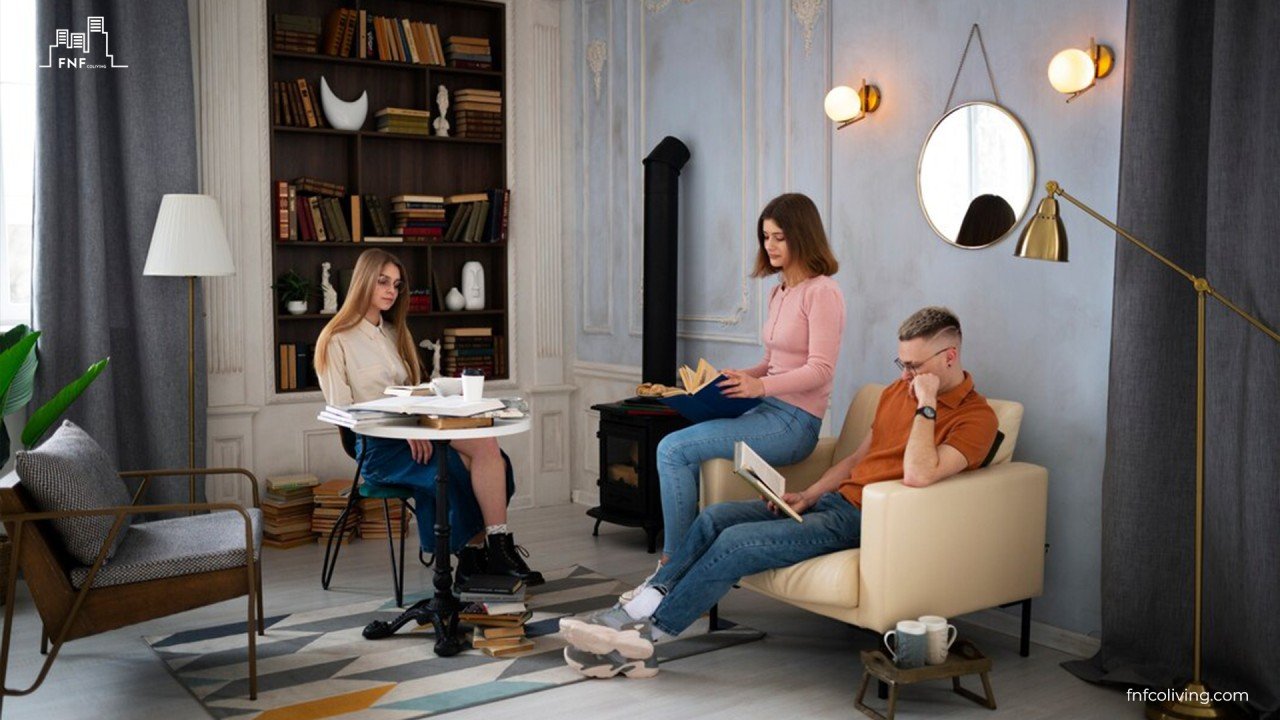
In recent years, the concept of co-living has evolved from a budget-friendly housing solution for young professionals into a refined lifestyle choice embraced by individuals seeking convenience, comfort, and community. Today’s co-living communities no longer mean cramped spaces or shared dormitory-style living. They’ve transformed into beautifully designed environments equipped with luxury amenities and a strong sense of belonging.
Urban dwellers are increasingly prioritizing flexibility, experience, and human connection. This has paved the way for co-living spaces that combine the best of both worlds: private, stylish residences paired with communal spaces that foster networking, collaboration, and shared experiences.
The earliest co-living setups catered primarily to affordability and practicality. Shared apartments were an answer to rising urban rents and the growing gig economy. But as global living preferences shifted, the market saw an opportunity to redefine the experience.
Today’s luxury co-living communities are far more than shared spaces — they’re lifestyle hubs designed around wellness, productivity, and social engagement. Tenants are offered high-end interiors, on-site gyms, rooftop lounges, coworking areas, wellness zones, and curated social events. This shift represents a deeper societal trend toward community-driven yet independent living.
Millennials and Gen Z professionals have been at the forefront of this movement. They value flexibility over long-term commitments, convenience over ownership, and meaningful experiences over material possessions. Many are digital nomads, entrepreneurs, or remote workers who prefer paying one all-inclusive fee rather than dealing with multiple service providers.
However, it’s not just young professionals fueling this demand. Expats, corporate travelers, and even retirees seeking a social environment have also started opting for co-living. The model suits anyone who values connection and comfort without compromising on privacy or luxury.
Luxury co-living isn’t just about living together; it’s about living better. Here’s what makes these communities stand out:

One of the major appeals of co-living communities is simplicity. Residents pay a single monthly fee that covers rent, utilities, Wi-Fi, cleaning, and maintenance. No hidden costs, no time-consuming coordination with landlords or service providers.
For many, this all-inclusive approach is not only cost-effective but also stress-free. It aligns perfectly with the fast-paced urban lifestyle where convenience is key.
The luxury co-living model goes beyond aesthetics. It’s about creating an environment where well-being and social engagement take center stage. Developers now focus on designing buildings that enhance both mental and physical health. Natural lighting, green terraces, and wellness spaces are integral parts of the architecture.
Moreover, the quality of service provided mirrors that of high-end hotels. From housekeeping and room service to concierge assistance and on-demand maintenance, the focus is on offering a five-star living experience within a residential setting.
Technology has become a cornerstone of luxury co-living. Property management apps allow residents to book amenities, join community events, or even pay rent seamlessly. Some communities integrate AI for predictive maintenance — fixing issues before they become problems.
Smart homes are no longer futuristic; they’re standard. Automated lighting, climate control, and keyless entry are common features. These technologies not only elevate comfort but also promote sustainability by optimizing energy use.
Modern tenants are environmentally conscious, and luxury co-living spaces reflect that. Developers are increasingly adopting green building practices — solar panels, energy-efficient appliances, and sustainable materials are part of the design philosophy.
Recycling programs, plant-based cafeterias, and shared electric vehicle stations are becoming popular features. This eco-conscious approach not only reduces environmental impact but also attracts a community of like-minded individuals who care about responsible living.
Ironically, as technology connects people globally, many individuals report feeling lonelier than ever. Co-living communities directly address this issue by fostering authentic, in-person connections.
Residents share meals, participate in wellness activities, collaborate on projects, and celebrate milestones together. This social framework creates emotional stability and a sense of belonging — two things often missing in traditional housing.
In many luxury co-living properties, community managers play an essential role. They curate events, mediate relationships, and ensure residents have a positive experience. It’s not just about renting a space; it’s about joining a lifestyle.

Luxury doesn’t always mean expensive. Many co-living spaces offer flexible contracts — from monthly stays to yearly leases. This appeals to professionals on short assignments, frequent travelers, or those relocating to new cities.
The pricing model remains competitive compared to renting a traditional apartment and paying separately for utilities, furnishings, and cleaning services. In many cases, residents enjoy a premium lifestyle at a fraction of the cost of conventional luxury rentals.
What started as an urban trend in cities like New York, London, and Singapore has now expanded globally. In regions like Dubai, Hong Kong, and Los Angeles, luxury co-living is emerging as the future of real estate.
Dubai, for instance, has seen a rise in high-end co-living developments catering to expatriates and entrepreneurs. These communities combine modern design with cultural inclusivity, making them perfect for a global workforce seeking balance between work and life.
Despite its growing popularity, the co-living model faces challenges. Maintaining a cohesive community, managing privacy concerns, and balancing inclusivity with exclusivity can be complex.
Developers must continuously innovate to stand out. The focus has shifted from just providing space to delivering unique experiences that residents genuinely value. As competition grows, differentiation through design, community engagement, and tech innovation becomes critical.
The future of co-living looks incredibly promising. As more individuals seek flexible lifestyles, developers are responding with tailored solutions — from family-friendly co-living to themed communities centered around art, sustainability, or wellness.
In the next decade, we can expect:
The co-living concept is shifting from a trend to a lifestyle movement — one that’s reshaping how people view “home” in a modern world.
As cities become denser and living costs rise, people are redefining what luxury means. It’s no longer about square footage; it’s about quality of life. Co-living offers the freedom of mobility, the warmth of community, and the sophistication of modern design — all in one package.
For many urban professionals, this model represents the ideal balance of comfort, convenience, and connection. Whether you’re a creative freelancer, an expat executive, or a digital nomad, luxury co-living offers an inspiring environment that fits your lifestyle and values.
Luxury co-living communities are not just transforming real estate; they’re reshaping the very concept of urban living. They bring together people, experiences, and technology in ways that promote harmony, sustainability, and belonging.
In an era where connection and convenience define success, these communities stand as symbols of modern luxury — where every resident finds not just a place to live, but a place to thrive.
Do Follow Estate Magazine on Instagram.
